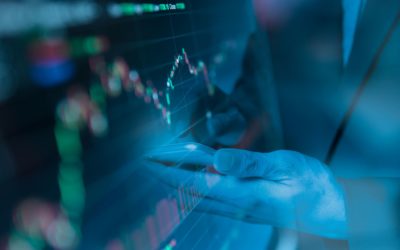Four Key Drivers for 311 2.0 Customer Engagement Initiatives
12
OCTOBER 2015
Eventus
We have written a couple times already this year about what we call “311 2.0”, the next generation of customer engagement capabilities now being implemented by state, local and municipal governments. These 311 2.0 projects are all occurring despite very difficult fiscal conditions for government organizations of all types. One reason for this is the existence of four “game-changing” enablers our contact center consulting experts are seeing deliver significant improvements in constituent service while at the same time delivering real reductions in operating costs:
1. Cloud-Based Services
Cloud-based applications (Software-as-a-Service or SaaS applications) and platforms (Platform-as-a-Service or PaaS) have been on the market since the beginning of the century. However, when the first wave of large-city 311 deployments took place in the early 2000s, cloud-based CRM and telephony was too new, immature and unproven. As a result, these projects all utilized previous-generation on-premises technologies.
Fast forward 14 years, and the situation has completely changed. Now virtually everyone is going cloud. Why is this? The short answer is next generation cloud-based CRM, telephony and contact center management software now offers unmatched functionality and lower prices to go along with proven performance and security.
From a functionality standpoint, new omnichannel architectures, cloud CRM and telephony products provide support for all the latest communications tools including chat, SMS, email, web, communities, even video. These products deliver a seamless experience for constituents who use multiple communication channels, as well as a 360-degree view for agents so they can see all communications with a given constituent in one place, regardless of channel. Furthermore, cloud CRM systems offer powerful knowledge tools that can drive self-service, mobile apps and agent desktops.
With the maturity of cloud technology, the proliferation of broadband and smarter devices, municipalities have access to the majority of technical capabilities via cloud platforms, which allows for a faster and more efficient delivery of business and technical capabilities, along with greater mobility of information and business processes. For example, a municipality can leverage contact center cloud platforms to quickly implement an omnichannel contact center, allowing them to focus the majority of their efforts on 311 service design and process integration.
SaaS and Paas services often employ consumption-based pricing models that can save organizations real money, especially if their workforce has seasonal variations. Furthermore, these services also have lower TCO because they eliminate the need to build backup sites for disaster recovery.
Finally, leading cloud application vendors have implemented government and industry-specific security protocols such as HIPAA and PCI. Furthermore, they have passed multiple federal government security audits.
In addition to the above, organizations with either new or existing custom applications can choose to deploy them in the cloud by using an Infrastructure-as-a-Service (IaaS) platform such as Amazon Web Services. IaaS platforms can have dramatic cost advantages over deploying applications in an on-premises data center.
2. The Internet of Things (IoT)
The Internet and the World Wide Web are now entering an era that many pundits are calling “Internet 3.0” or “Web 3.0”. The defining capability of this next generation is the emergence of the “Internet of Things”. Internet of Things, or Cloud of Things (CoT) refers to the interconnection of uniquely identifiable embedded computing like devices and sensors to the existing Internet infrastructure.
Municipalities will be huge beneficiaries of the Internet of Things because they manage lots of things, from parking meters to utility meters to snow removal equipment. As all these devices get connected to the Internet, people and processes will have unprecedented access to information about those devices in real time that will help improve service quality while simultaneously lowering the cost of doing business.
For example, for government organizations that operate municipal utilities, the Internet of Things will bring utility meters that automatically report real-time usage information. Municipalities will no longer have to deploy meter readers, saving money and providing more information that can be used to optimize business processes. Constituents will be able to leverage the smart devices in their homes like TV’s and refrigerators to adjust their usage based upon consumption information from their meters in real time and obtain billing information using 311 self-service capabilities.
3. Communicating in Context
In today’s world of increased constituent expectations, constituents expect that agencies not just answer their contact or satisfy their service request, but to do it in context of all the other communications and services that they are consuming from one or more government agencies. To do this, the 311 system needs to know where the person is, what they are trying to do, what types of communications device and channels they are using to communicate with them, and the identity of the person (if they want to disclose their identity).
It is already possible for a 311 agent to take a call from a constituent and see on his screen that the constituent is calling from their mobile phone and has just had a problem using the ParkMobile service to pay for a parking spot downtown. With this information readily available, the agent will have a big head start in understanding why the constituent may be calling, what their problem is and what kind of solution to provide. Providing this capability requires the organization to integrate its CRM system with ParkMobile’s API.
In some contexts, the right way for the 311 program to interact with the constituent is by providing self-service capability, not a connection to a live contact center agent. Recent studies actually show consumers generally prefer to solve their own problem online via a mobile or web application or community rather than waiting on hold to talk to a live agent. Providing this kind of effective self-service requires a multiple source modern knowledgebase integrated into the 311 portal. It is essential, however, that the knowledge be presented in context of the user and the task that they are attempting to complete, and the user interface be organized and described in terms that will make sense to the constituent as opposed to the insider language government employees who work the cases use.
4. The Analytics Revolution
Applications have had reports since there were applications. However, just as this century has seen a revolution in computing platforms with the emergence of cloud computing, another revolution has been occurring in the field of analytics. As applications began to produce more and more data, information architects found ways to make that data more easily accessible and usable for analytics purposes. Initial waves of innovation resulted in the availability of business intelligence and data warehousing tools. More recently, “big data” has emerged as an architectural approach to managing extremely large quantities of data (often produced by the Internet of Things) in the cloud where it can be cost-effectively managed.
This revolution has impacted 311 systems most directly in the analytics capabilities now available with cloud-based CRM and telephony systems. Some of these systems come with literally hundreds of predefined reports designed to provide analysis on virtually every possible KPI. Furthermore, they offer extensive customization capabilities that are accessible to regular business users. Implementing analytics is a fundamental element of new 311 deployments and 311 modernizations. In addition, real-time analytics that works on-the-fly without predefined reports plays an essential role for 311 optimizations.
Similar Blogs
Built In Honors Eventus in Its Esteemed 2024 Best Places To Work Awards
Denver, CO // January 9, 2024 —Built In today announced that Eventus was honored in its 2024 Best Places To Work Awards. Specifically, Eventus earned a place on Best Midsized Places to Work in Colorado in Denver. The annual awards program includes companies of all sizes, from startups to those in the enterprise, and honors both remote-first employers as well as companies in large tech markets across the U.S.
Eventus Solutions Group, a Tech Mahindra Portfolio company, Launches Navixus™
Eventus, a leading provider of digital transformation, consulting, and business re-engineering solutions, has announced today the launch of a new business unit Navixus™, within Tech Mahindra Business Process Services (BPS). Navixus™ will combine Tech Mahindra’s Business Process Services’ automation, analytics, and consulting with Eventus’ customer experience (CX) and transformation capabilities to offer a holistic digital transformation suite to customers.


